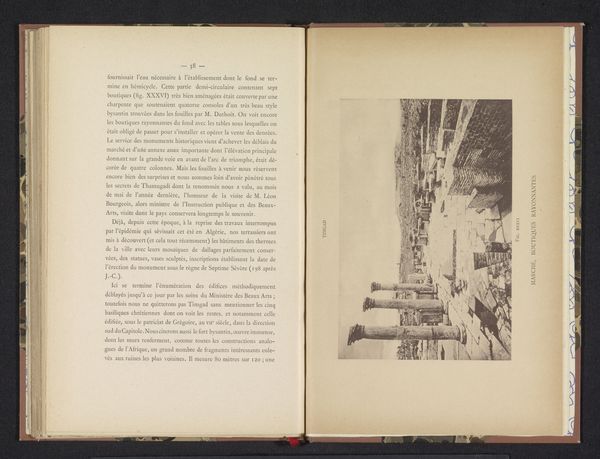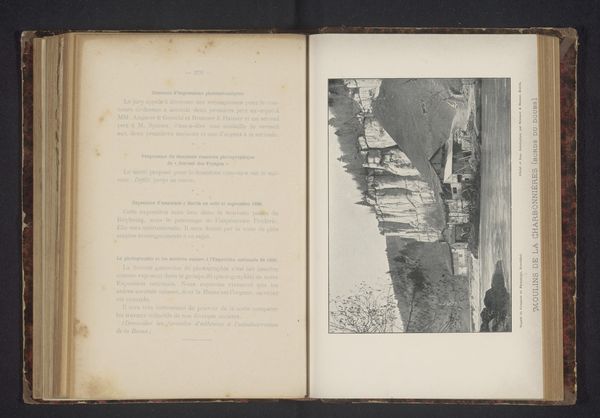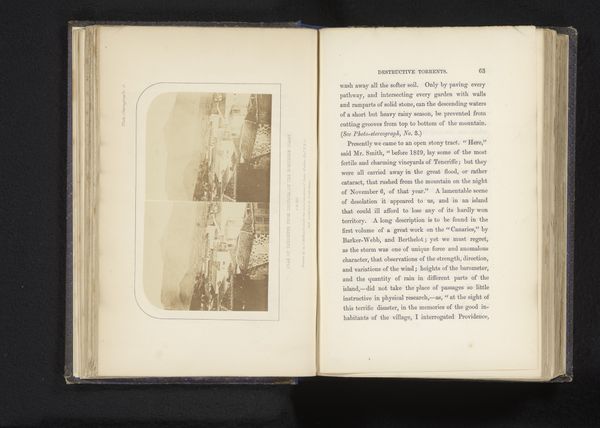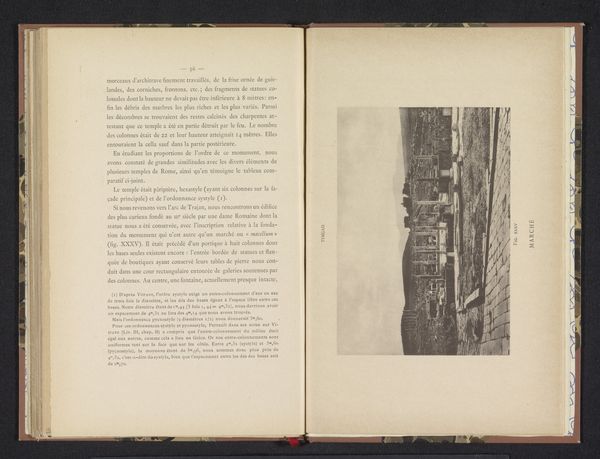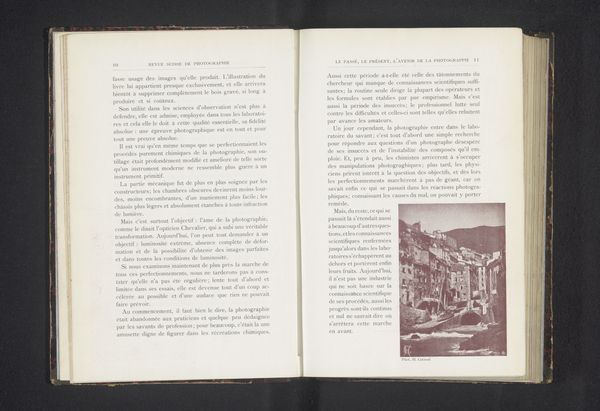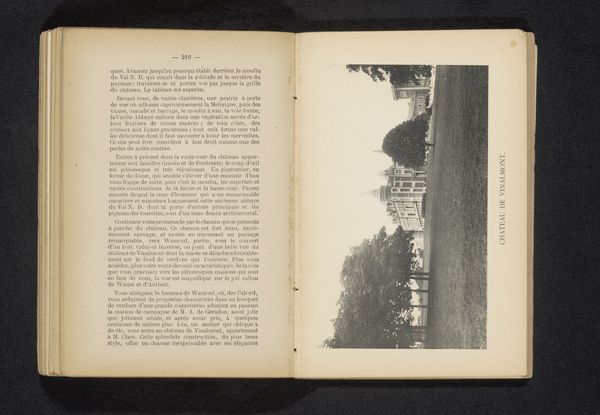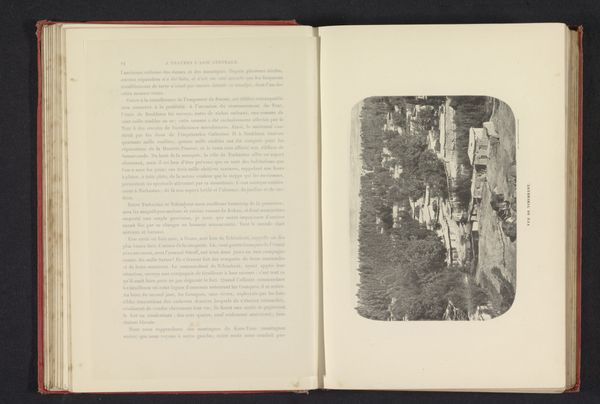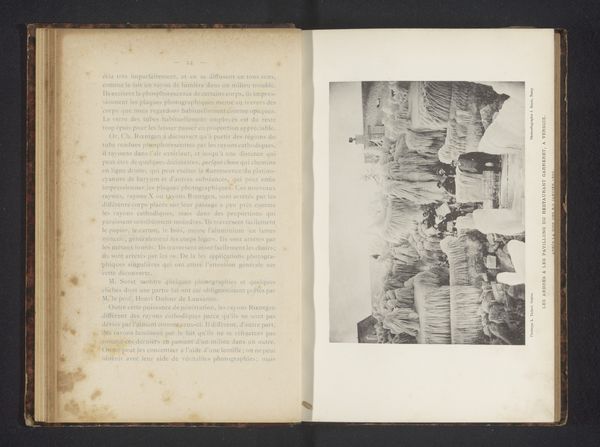
print, photography, engraving, architecture
#
byzantine-art
# print
#
landscape
#
photography
#
coloured pencil
#
engraving
#
watercolor
#
architecture
Dimensions: height 107 mm, width 157 mm
Copyright: Rijks Museum: Open Domain
Editor: So, here we have "Gezicht op een ringmuur uit de Byzantijnse tijd in T\u00e9bessa," or "View of a Byzantine-era Ring Wall in T\u00e9bessa," made before 1894. It seems to be a print of a photograph with some engraving and possibly watercolor or colored pencil added. It feels very much like an artifact, like I'm looking at a relic from a lost time. What do you see in this piece, looking at it with your expertise? Curator: This work sparks many thoughts! It's crucial to situate this image within its historical context. Before 1894, European powers were deeply invested in colonial North Africa. This image, presented as a "view," is not neutral. It reflects a particular gaze—a European gaze that seeks to document, classify, and ultimately possess this history. Who commissioned the image, and for what purpose? The “Byzantine” label is interesting. What does it mean to frame North African history through this lens, potentially sidelining indigenous perspectives or histories? Editor: That’s fascinating. I hadn't thought about the colonial aspect so directly. It does change how I perceive the image now. Curator: Consider the aesthetics too. The choice to present architecture – a human imposition on the land – can be loaded. Landscape art, particularly in colonial contexts, often served to naturalize the presence of colonizers and justify their claims. Is this depiction celebrating a fusion of cultures, or is it reinforcing a power dynamic? Editor: It makes me wonder if the artist was even considering these issues or were they simply following the conventions of the time. Curator: Exactly! But the conventions themselves are never neutral, right? They reflect underlying assumptions and power structures. It's by unpacking those conventions that we can understand the image’s role within broader historical narratives. The act of "viewing" itself becomes a political one. Editor: This has really changed my perspective on something I initially just saw as an old picture. Thanks! Curator: Absolutely! Thinking critically about the circumstances surrounding the creation and reception of an artwork, like this one, allows us to uncover those complex layers of meaning. Always question the point of view!
Comments
No comments
Be the first to comment and join the conversation on the ultimate creative platform.
